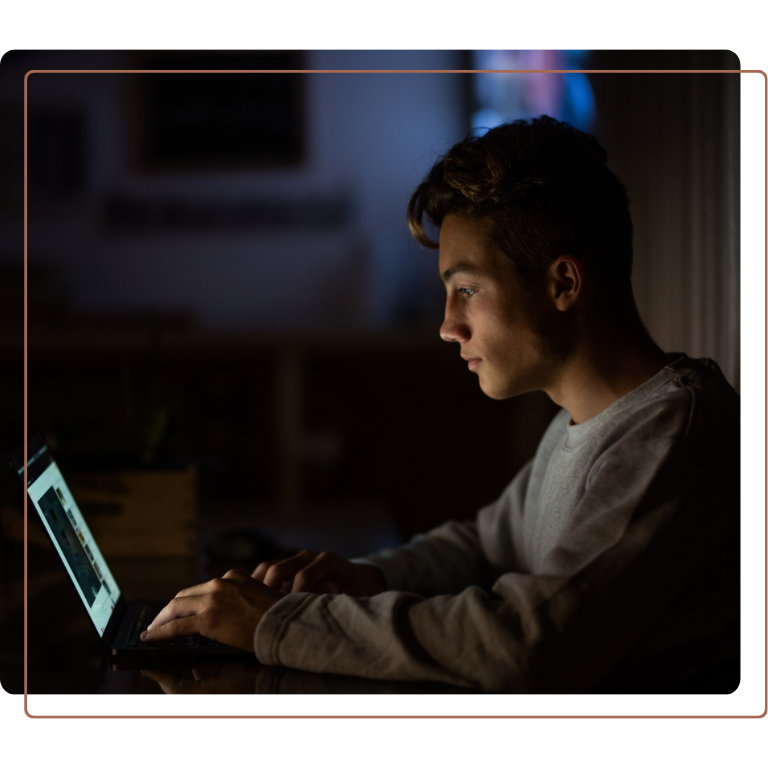
Some Parents are Blind To Teen Pornography Addiction
Some Parents are Blind When it Comes to Teen Pornography Addiction Because of my work with ScreenStrong, and my own experience with my oldest son,

Sexual desire is one of the most motivational forces in humanity making pornography the biggest economic engine fueling the expansion of the Internet.
Addiction is a disorder of the brain’s reward system that changes both brain structure and function. Most parents are not aware of this.
The same brain pathway that is activated with drug and alcohol use is also activated by the use of pornography: the dopamine reward pathway. Novelty, shock, and surprise are powerful motivating factors for tweens and teens as pornography exposure elevates dopamine to unnatural levels and causes a high arousal state. Internet porn is very arousing to teens who are just discovering their sexuality. Here are some ways the brain changes with porn use:
Access to any addictive substance or activity – drugs, alcohol, gambling – will increase the risk for inappropriate use and addiction. The same is true with internet pornography. Porn viewing is inevitable when kids have access to private, personal screens such as smartphones and tablets. These three factors increase the odds of addiction:
High dopamine production. Porn addiction is caused by an increasing dependency on the high dopamine production that is triggered in the brain by viewing sexual content. Survival activities like eating (food), and procreation (sex) produce the highest dopamine responses. The brain creates memories or cravings for things that create excessive dopamine. “This feels good so let’s keep doing it!” When unnaturally high levels of dopamine are produced over an extended period of time, the system becomes desensitized and now more dopamine is needed to just feel okay.
Endless novelty. Experiencing new things triggers dopamine, making us feel good. Porn provides a never-ending supply of novelty. Novelty is strongly associated with overconsumption—“extra excitement” activities strengthen brain circuits, urging repeated use. Over time, the brain learns that porn is a reliable way to encounter novel images and seek good feelings. Each new stimulus gives an incentive to explore more. This rush creates anticipation of a reward, and the addiction cycle is born.
Dr. Emrah Düzel, from the Institute of Cognitive Neuroscience at UCL says: “When we see something new, we see it has a potential for rewarding us in some way. This potential that lies in new things motivates us to explore our environment for rewards. The brain learns that the stimulus, once familiar, has no reward associated with it and so it loses its potential. For this reason, only completely new objects activate the midbrain area and increase our levels of dopamine.” Pornography supplies endless novelty.
Easy access. A potential trigger for most addicts is easy access to the problematic substance or activity. In the past, pornography was accessed via magazines that were generally limited and hard to get; maybe a single issue or even just a centerfold carefully hidden under a mattress. But now porn can be accessed on nearly every online platform and social media site. Smartphones are carried in pockets and purses and the small screen size makes viewing porn at school, on buses, and anywhere in public possible without getting caught.
How do you know your teen is struggling with a porn habit? Pornography dependencies can be difficult to detect in tweens and teens due to the hidden nature of access. It may be easy to spot a drug or alcohol overuse problem, but there are no outward physical signs of porn use. General signs include:
Today, the climate is very different. Porn saturates the virtual world in ways unmatched by traditional print outlets. . Gone are the days of subtle, soft pornography. Now we face unimaginable, graphic porn online that leaves nothing to the imagination. . Tweens and teens have easy access to hardcore porn streamed directly to their devices, little of which resembles real-life sexual encounters.
So where do kids and teens find these porn videos? On smartphones and laptops. The smaller the screen, the greater the access. Your child does not have to look far to be exposed to pornography. This means that the porn industry, using new customer-seeking tactics, will find your kids. . An innocent-looking site can easily lead a child astray with a link, ad, or photo. An innocent app on your child’s phone also provides a gateway to content you can’t control.
Here are some unexpected places where your child may find sexual content:
TikTok: This popular app seems innocent enough on the surface. What could go wrong with funny dances? Turns out a lot can go wrong. Clicking on the “For you” menu and swiping through its suggested videos can take you to inappropriate content. Once this novel content is clicked, the algorithms work to keep feeding more of the same content. Before long, sexual content is being served up on a daily—even hourly—basis.
Pinterest, Instagram & Snapchat: Porn is taking over social media. Sites like Pinterest can be used to search words like “naked,” “bikini,” etc. to find images that bypass the site’s restrictions. Most porn stars and adult websites also have Pinterest boards where they upload images. Like Pinterest, you can search for nearly anything on Instagram, including porn. Porn stars also have accounts on Instagram where they post images. Snapchat lets users exchange pictures and videos (called snaps) that are meant to disappear after they’re viewed. This function makes sharing sexual images or content very popular. It is tempting to share compromising photos or engage in cyberbullying when photos disappear after being seen.
Video Games: Sexual content in video games—strip clubs, sexualized characters and themes— is nothing new, but there has been a shift to purposefully target video game distribution platforms and young players with pornographic content in order to find future customers. A google search for Minecraft or Fortnite sex leads to themed porn images and videos. Minecraft also has sexual content including sex hotels, and instructions to build a functional penis, vagina, etc. Your child can also learn about oral sex and countless other sexual acts through the use of Minecraft’s Lego-style figures.
Cartoons & Anime: Animated content isn’t always for kids. Just because sexual content is depicted via animation, doesn’t make it less damaging for the brain. Anime, cartoon porn, and regular porn are all the same to the human brain and cause permanent damage and scarring. Any cartoon character search can result in sexual content. If a child searches for “Disney sex,” for example, the content is cartoon porn. Anime is a form of adult-style cartoon and Hentai is a genre of Japanese manga and anime characterized by overtly sexualized characters and sexually explicit images and plots. Just searching for the definition online brings up horrendously graphic images. Hentai finds its way onto multiple platforms including TikTok and YouTube.
Hidden access makes it nearly impossible for parents to detect porn use. The search history on digital devices typically reveals the problem, but a savvy user will learn how to delete searches, use incognito tabs and secret apps to make discovery virtually impossible. Many parental control programs will alert parents only after the fact. Research says that boys and girls alike struggle with porn.
Because we live in a screen-saturated world, you may think it is impossible to stay on top of it all, but there are many things that parents can do to reduce the risks. Prevention generally centers around removing access, creating accountability, and increasing education.
Here are some tips that can help you prevent early porn exposure:
For a complete list of porn prevention tips, check out our Kids’ Brains & Screens Course. Here are just a few:
When you know better, you do better. We have more research around digital addictions than we have ever had before. We know that all these digital addictions can be easily prevented. Research is conclusive: smartphones are too risky for teenagers. There are wonderful screen-alternatives that come with very little risk. ScreenStrong can give you the answers, community, and support you need to raise happier, healthier kids. It’s time to stand up for your kids, stand out from the crowd, and be ScreenStrong.
Disclaimer: This information is not a replacement for the therapy or treatment center necessary to help an at-risk or addicted child. If you feel like your child will potentially do bodily harm to you, himself or herself, seek professional help.

Some Parents are Blind When it Comes to Teen Pornography Addiction Because of my work with ScreenStrong, and my own experience with my oldest son,

How to Protect Your Child from Online Porn 7 steps parents can take at home to prevent online porn exposure at an early age. “I never
team@screenstrong.org | 301 E. John St. Suite 163, Matthews, NC 28105 | Copyright © 2016-2024 | 501(c)3 EIN#: 47-5470710
team@screenstrong.org
301 E. John St. Suite 163, Matthews, NC 28105
501(c)3 EIN#: 47-5470710
Copyright © 2016-2024